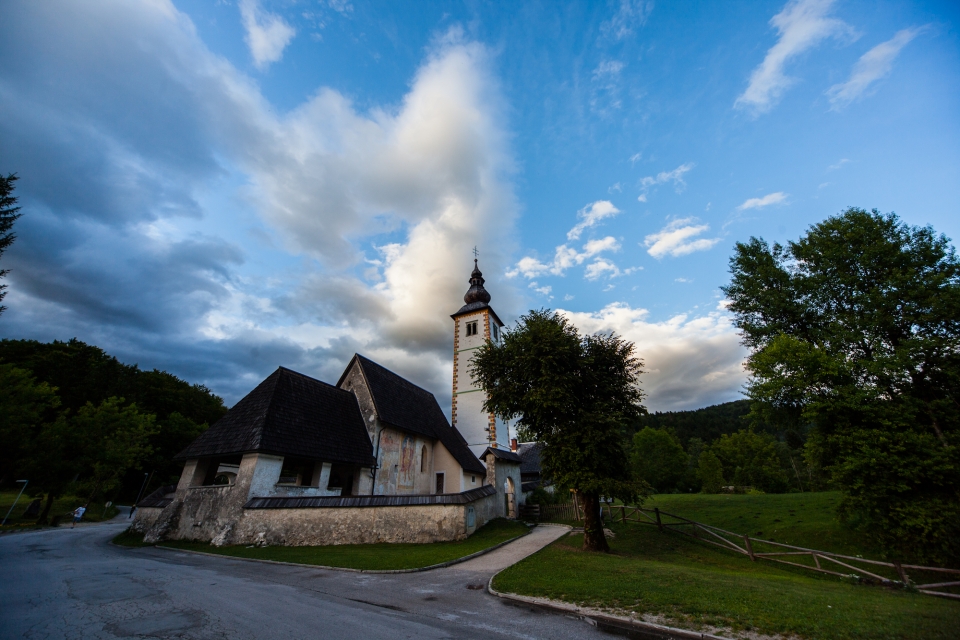The Church of St. John the Baptist was built before 1300. Having survived many centuries, it showcases various styles- from Romanticism to Baroque. Its exceptional nature is highlighted by the fact that there are only five such examples in the world. Today, you can see a replica in the church, while the original is kept by the Institute for the Protection of Cultural Heritage.

In the holy temple, there are also frescoes- the oldest dating back to the 13th century. More than 70 different motifs are painted, including many saints. On the southern exterior wall of the church, St. Christopher is depicted, a figure also found in other churches in Bohinj. Researchers have discovered three representations of him in different layers. The first layer was painted around 1300, the second around 1400, and the third around 1530. St. Christopher is the patron saint of pilgrims, travelers, horse and cart drivers, drivers, porters, rafters, and boatmen. People believed that gazing upon St. Christopher brought them good fortune and protected them from sudden and unexpected death.
In the church, you can also see one of the oldest frescoes in Slovenia. It depicts St. John the Evangelist drinking poison in front of the priest Aristodemus. The fresco also features two white devils and angels with ribbons, showing them with goiters and teeth.
A unique feature of the church is the gravel-stone-paved Gothic shed, with an old stone collection plate inside. The roof of the church and the low rampart are covered with shingles. Inside, there is also a wooden choir with a fence, resembling those found in alpine farmhouses. Once, there was a cemetery around the church, of which only the open and painted Gothic chapel behind the presbytery remains as a reminder. The baroque bell tower is particularly distinctive, appearing as if two onions are stacked one on top of the other, which is referred to as a bell tower with a double onion. Additionally, in one part of the bell tower there is a small turret with windows- a lantern.
The picturesque Church of St. John the Baptist is now a succursal of a parish of Srednja Vas in Bohinj. As one of the most beautiful examples of Slovene medieval building and wall painting, it is protected as a cultural monument.

DO YOU KNOW?
-
It rains a lot in Bohinj, which is why the locals often say that the rain has "young ones" in Bohinj. This leads to the following story: whenever it rained excessively in Bohinj, a holy mass for good weather would be immediately held in the Church of St. John the Baptist. If it still didn’t stop raining for a long time, they would move the wooden head of St. John the Baptist from the church to the bridge and say: "When it’s wet enough, he will surely ask for the rain to cease."
Thank you.

